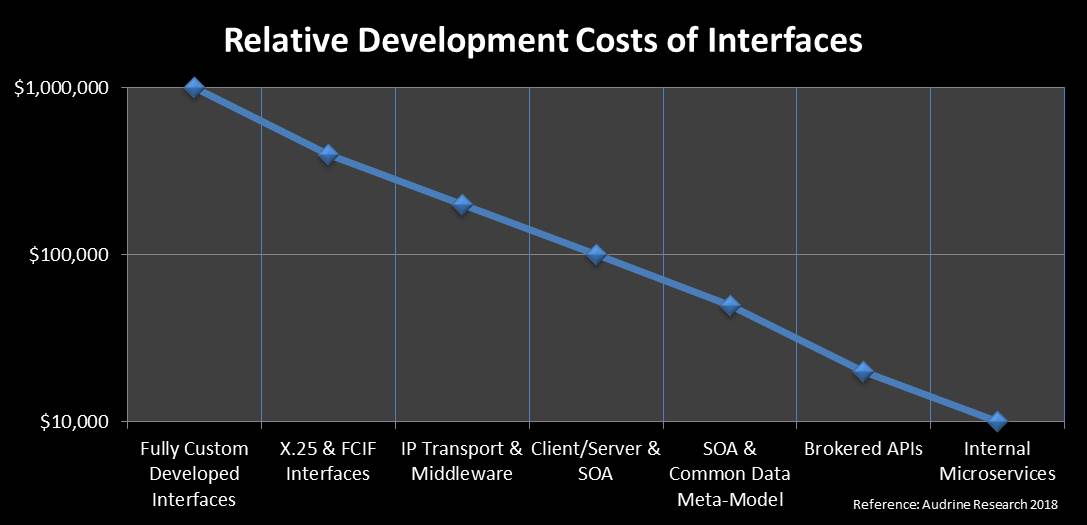Decreasing BSS/OSS “integration tax”: Part 2 – IP and middleware make things better
This BLOG post is the second in a series of short articles on the changes in BSS and OSS architectures arising from the changing underlying data communications, middleware, and data modeling software technology. In the last posting, we looked back on the early days of OSS and BSS – in the 1970s and early 1980s when only huge systems, architected by the same group, and implemented and tested by a single vendor, could hope to work together.
During the 1980s and 1990s, while the technical world was focusing on the X.25 standard for system interoperability (and good old Bell Labs, never an organization to go with ‘good enough’ created its own improved version, BX.25), the TCP/IP protocol was coming into its own. It was not endorsed by any standards organization. It wasn’t owned by anyone. The group that agreed to it documented the agreements by something they call RFCs – ‘Request for Comments.’ But it was simple. It was open. And it could be easily implemented on a wide variety of hardware. It became the de facto worldwide standard, essentially solving the problem of system interoperability at the lower levels of the protocol stack.
At the same time, ‘middleware’ raised its head in the BSS/OSS industry. Vendors such as TIBCO had their software ‘busses’ that could be implemented to bind together software systems. All you had to do was to build to their API (and have an agreed-to mapping of the internal data models of the various systems to an intermediate language, with interfaces to the API implemented in every system) for systems to ‘talk’ together. The TMForum created its NGOSS architecture around this ‘bus’ concept, and many modern systems were built around one of the busses available in the market. This made integration MUCH easier and cheaper, as seen below. For a mere half to one million dollars you could have a systems integrator interface two systems together.

The effect was that systems that were formerly ‘islands’ of automated systems started to be hooked into each other, creating ‘flow-through provisioning’ and an end-to-end ‘trouble process,’ among other work flows. So, if you wanted a good multi-OSS or BSS system, you would go to a systems integrator (SI), choose a bus, choose the new OSSs you wanted to implement, decide which legacy systems needed to be hooked into, and sit back and wait a couple of years for the SI to do its magic – at a very high cost.

